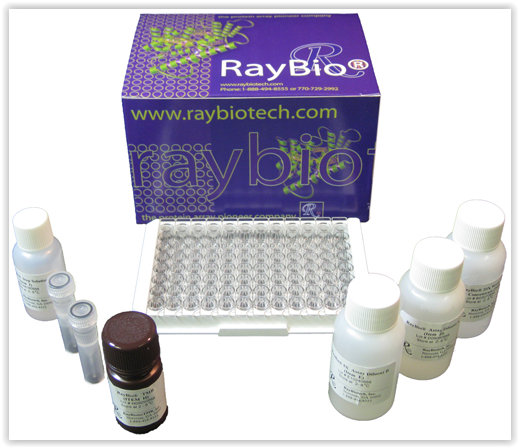
Launched just over a year ago, SiR-Actin (Fig 1) and SiR-Tubulin (Fig 2) have been available on the market providing the most convenient tools to stain F-actin and Microtubules in living cells. In the meantime, Spirochrome have launched a third stain based on the SiR-technology – SiR-DNA (Fig 3) to stain DNA in living cells.
These stains meet the central requirements for live cell imaging tools:

- high selectivity
- minimal toxicity
- fluorogenic for wash-free imaging
- applicable in different cell types and tissues
- excited by far-red light
- suitable for super-resolution microscopy

In particular, SiR-Actin and SiR-Tubulin are the only stains available on the market which enable live cell imaging of the major cytoskeletal cellular structures – without the need to transfect cells with vectors carrying the information for fluorescently labeled tubulin or actin or related binding proteins.
The proprietary bright and photostable silicon rhodamine-like (SiR) technology is compatible with most microscopes. It can be used with standard Cy5 settings. The combination of all these properties set SiR-based probes apart from other fluorescent probes. The SiR dyes are coupled to binding components which specifically bind to F-actin (Jasplakinolide natural compound), Microtubules (Docetaxel), or the DNA minor groove binder bisbenzimide (Hoechst).

What do users do with these stains?
Cell biologists work with a number of cell and tissue types and of course every cell types shows some specific characteristics concerning the uptake of tools like our SiR-stains. It is known that the commonly used drug Verapamil which belongs to a group of calcium channel blockers enhances the uptake of SiR-stains in some cell types (for further info, read more here); that is why Verapamil is added to all SiR-stain kits routinely. To give users a good overview which cell types have been already successfully stained with SiR-Actin and SiR-Tubulin, we are building up a data base in cooperation with Spirochrome. Table 1 gives you a quick overview about the data we collected so far from our own and users’ experience. One of the few cells/organisms which could not be successfully stained are fungal cells like yeast or dictyostelium cells. If you are interested in details about the experimental setups used or if you have experience (positive or negative) with other cell or tissue types, we invite you to get in touch by leaving a comment below.
Results recently obtained by SiR-stain users


Fig 1 and 2 show results provided by Erik T. Valent from the VU Medisch Centrum, Amsterdam, The Netherlands (Fig 1) and Bernard M.van den Berg from the LUMC, Leiden, The Netherlands (Fig 2). Both labs stained Human umbilical vein endothelial cells (HUVECs) either with SiR-Actin or with SiR-Tubulin.
Interested in more SiR stain user results in Live Cell Imaging?
More and more results have been published over the past months using the SiR-stains and showing their applicability on miscellaneous cell and tissue samples and in diverse microscopic set-ups.
We’ve compiled a selection of the latest publications using SiR-stains. In this overview you’ll also find first publications with the recently launched SiR-DNA as well as publications in which SiR-derivatives such as SiR-NHS or SiR-tetrazine have been referenced.




7 responses
…If SiR-DNA can stain also mtDNA? Merci! 🙂
Dear Jana,
Thank you for your interest in SiR-DNA and for reading our blog.
Unfortunately, SiR-DNA is not able to stain mitochondrial DNA.
For staining mtDNA in live cell imaging applications, one would require a SiR-conjugated ligand with a stronger affinity for DNA. But such a stronger binding capacity will most probably lead to high levels of cellular toxicity.
I would like to invite you to look at the following page in which various validated Live cell imaging alternatives for studying organelles are described: Most comprehensive range of Live Cell Imaging tools at tebu-bio.com
For the time being, feel free to contact me for any help.
Regards,
Philippe
Hey guys,
we are interested in using SiR-actin in S. cerevisiae, but you mention it might not work in yeast. Could you let us know which yeast you used and whether it was in live-cells or after fixation?
Thanks a lot!
Wolfgang
Dear Wolfgang,
Thank you for your interest in our blog.
The SiR dyes have been tested on S. cerevisiae with suboptimal results. These cells contain highly divergent actin proteins but these still bind to some fluorescent phalloidins such as Acti-stain 488.
Yeast actin structure changes depending on the cell cycle status (filamentous, in patches or rings…). SiR Actin is based in the affinity of this molecule for filamentous actin, so the patch and ring conformation could not be compatible with the dye (jasplakinolide). Some yeast strains have also ABC multidrug resistance transporter genes that make them resistant to jasplakinolide which cannot enter the cells.
My colleague Paola who helped me in this answer, recommends the following publications:
http://mmbr.asm.org/content/70/3/605.full
http://www.cell.com/current-biology/abstract/S0960-9822(00)00859-9?_returnURL=http%3A%2F%2Flinkinghub.elsevier.com%2Fretrieve%2Fpii%2FS0960982200008599%3Fshowall%3Dtrue
I hope this helps.
Regards,
Philippe
Hi,
I woul d like to take SiR-actin or SiR-tubulin as counterstain to distinguish my cell type in a co-culture system (these two cell types are very different in F-actin morphology, as confirmed by staining with Phalloidin-488). And I would like to know how photostable these dyes are, when it comes to time=lapse confocal imaging up to 24 or 48 hours, with taking pictures every 10-15 minutes? Did you by any chance test this before? Thanks in advance.
Have a nice day
Dear Dr Hsu,
Thnak you for your request on this post and regarding our products.
After discussion with our specialist, he confirmed me that if your cells have two differents F-actin morphology (validated byt eh Phalloidin staining on fixed cells) the same difference should be visible in living cells with thte SiR-Actin.
The point i smore on stability over 24-48 hours. For this experiments time our speciliasit recommend to labelled the cells with 100nM (at least) with the probe to avoid any toxicity of the probe and also to add free probes in the culturing media during all the experiments.
I hope my answer is helpful and don’t hesitate to contact your local office (https://www.tebu-bio.com/cms/1054/Your_local_tebu_bio_contact.html) for a quote request.
Best regards,
Frédéric
Dear Frédéric,
thanks for your information. I would contact the local office if we decide to buy it.
Have a nice day.
Best Regards,
Mei-Ju